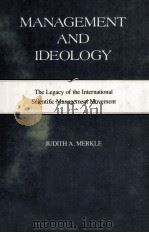《THE FUTURE OF INTERNATIONAL FISHERIES MANAGEMENT》
| 作者 | H.GARY KNIGHT 编者 |
|---|---|
| 出版 | 未查询到或未知 |
| 参考页数 | 253 |
| 出版时间 | 没有确切时间的资料 目录预览 |
| ISBN号 | 无 — 求助条款 |
| PDF编号 | 811902158(仅供预览,未存储实际文件) |
| 求助格式 | 扫描PDF(若分多册发行,每次仅能受理1册) |
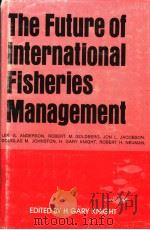
Ⅰ.International Fisheries Management: A Back-ground Paper—H. Gary Knight1
A.History1
1.Pre-19581
2.The 1958 and 1960 Law of the Sea Con-ferences6
3.State Practice, 1945-1974; the Existing System8
4.Fisheries, the Current Law of the Sea Negotiations, and the Third United Nations Conference on the Law of the12
B.Issue Identification15
1.Objectives of Fisheries Management15
2.Conservation23
3.Allocation27
C.Positions and Interests on Fisheries in the Law of the Sea Negotiations37
1.The United States Fishery Proposal and Its Revision: The “Species” Approach37
2.Proposals of Distant Water Fishing Na-tions39
3.Broad Coastal State Jurisdiction Pro-posals41
D.Procedural Aspects of Developing Fishery Policy43
1.Pros and Cons of the Third Conference Format43
2.The Constitutive versus the Substantive Approach46
3.International Agreement versus Custom-ary International Law Processes48
E.Conclusion49
Ⅱ. Future Fisheries Technology and the Third Law of the Sea Conference—Jon L. Jacobson51
A.Introduction51
B.A Short History of Fishing Methods55
C.Future Fishing Technology/Law of the Sea Implications60
1.Location of Fish61
2.Capture of Fish65
3.Processing of Fish72
4. Vessel Construction and Navigation74
D.General Conclusions: Fishing Technology75
1.Increased Efficiency75
2.Need for Increased Cooperation: “Fish Forecasting” Services79
3.Sophisticated-Gear Conflicts82
4.The Passive-Gear Trend82
E.The Future Impact of Aquaculture86
F.Conclusion: Flexibility is the Key87
Ⅲ. Multinational Investment in Fisheries: Implica-tions for International Agreements on Living Marine Resources—Robert H. Neu-man93
A.Introduction93
B.Who Invests and Why93
C.Developed Country Investment Activity95
1. Brief Review of World-wide Investment Activity95
2.What Such Activity Implies99
D.Possible Methods of Regulating the Flow of Multinational Funds99
1.Coastal State Management100
2.International Management100
3.Regional Management101
E.Conclusion101
Ⅳ.Some Treaty Law Aspects of a Future Interna-tional Fishing Convention—Douglas M.Johnston103
A.Introduction103
1.The Status of the Vienna Convention on the Law of Treaties103
2.Applicability of the Vienna Convention to Existing and Future Fishing Trea-ties and Fishery Agreements106
3.Applicability of a Future International Fishing Convention to Existing Fish-ery Agreements110
B.General Effect of the Vienna Convention on a Future International Fishing Con-vention111
1.Some Anticipated Features of a Future International Fishing Convention111
2.Problems of Conclusion and Entry Into Force113
3.Problems of Observance, Application and Interpretation114
4.Problems of Amendment and Modifica-tion116
5. Problems of Invalidity, Termination and Suspension117
C.Some Regional Treaty Consequences of a Fu-ture International Fishing Convention120
1.Classification of Fishing States120
2.Classification of Fishing Regions of the World123
3.Potential Treaty Law Problems in “Coastal Fishing Regions”124
4.Potential Treaty Law Problems in “In-clusive Fishing Regions”130
5.Potential Treaty Law Problems in “Fishing Conflict Regions”138
Ⅴ.Criteria for Maximum Economic Yield of an In-ternationally Exploited Fishery—Lee G.Anderson159
A.Introduction159
B.Summary of the Economic Aspects of Nation-al Fisheries Management160
1.Maximum Economic Yield160
2.Open Access Equilibrium Yield162
3.Maximum Sustainable Yield164
C.Analysis of “MEY” of an Internationally Ex-ploited Fishery167
1.A Two Country Model167
2.Criteria for Achieving an International “MEY”172
D.Problems of Application of “MEY” Analysis174
E.Various Proposals Regarding the Economic Rationale of Living Marine Resources177
1.The United States Position178
2.The “Patrimonial Sea” Concept180
3.The Japanese and Soviet Positions180
F.Summary181
Ⅵ.Ends and Means: The Role of Enforcement Anal-ysis in International Fisheries Regulation —Robert M. Goldberg183
A.Introduction183
B.The Elements of Enforcement187
1.Who Enforces187
2.Goals in Enforcement191
3.The Enforcement Process193
4.Direct Factors in Enforcement198
5.Indirect Factors of Enforcement200
6.Types of Enforcement Action206
7.Results of Enforcement207
C.Table of Values and Conclusion210
Ⅶ. Principles For a Global Fisheries Management Regime Preface213
A.Principle No. 1 Objectives214
B.Principle No. 2 Right of Management En-tity216
C.Principle No. 3 Global Fisheries Monitor-ing Agency221
D.Principle No. 4 Rationale for Global Regime225
E.Principle No. 5 Goal of Management Regime227
F.Principle No. 6 Dispute, Avoidance and Settlement229
G.Principle No. 7 Actions Inconsistent with Global Fisheries Treaty232
H. Principle No. 8 Enforcement234
Names of Members of the Working Group on Living Marine Resources237
Index239
《THE FUTURE OF INTERNATIONAL FISHERIES MANAGEMENT》由于是年代较久的资料都绝版了,几乎不可能购买到实物。如果大家为了学习确实需要,可向博主求助其电子版PDF文件。对合法合规的求助,我会当即受理并将下载地址发送给你。
高度相关资料
-
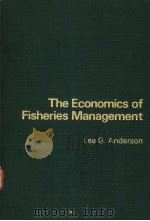
- THE ECONOMICS OF FISHERIES MANAGEMENT
- THE JOHNS HOPKINS UNIVERSIY PRESS
-
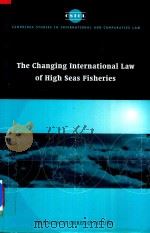
- The Changing International Law of High Seas Fisheries
- 1999 Cambridge University Press
-

- SAMUEL JOHNSON
- 1974 THE VIKING PRESS
-

- National Management of the International Economy
- 1988 MACMILLAN PRESS
-

- The Future of International Relations:Masters in the Making?
- 1997 ROUTLEDGE
-

- Accountability for Collective Wrongdoing
- Cambridge University Press
-

- FISHERIES RESOURCES OF THE PLAINS UTILIZATION AND MANAGEMENT
- 1988 CANADIAN PLAINS PROCEEDINGS 19 CANADIAN PLAINS RESEARCH CENTER UNIVERSITY OF REGINA
-
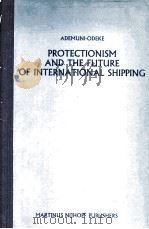
- PROTECTIONISM AND THE FUTURE OF INTERNATIONAL SHIPPING
- 1984 MARTINUS NIJHOFF PUBLISHERS
提示:百度云已更名为百度网盘(百度盘),天翼云盘、微盘下载地址……暂未提供。➥ PDF文字可复制化或转WORD





